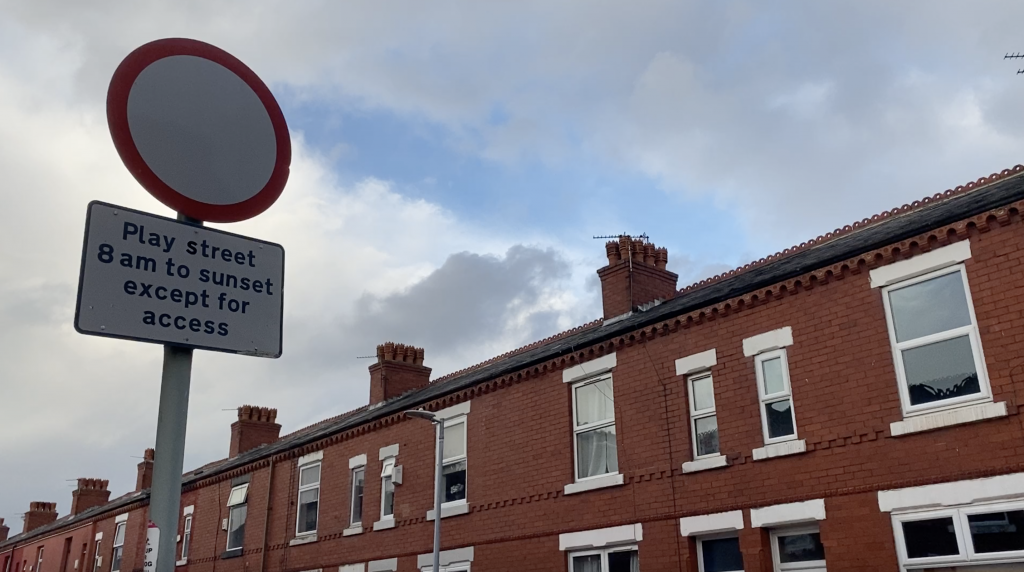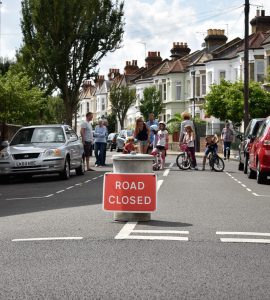
Salford City Council have confirmed that a pilot scheme reintroducing play streets to the city will go ahead.
The Council’s ‘Report on Play Street Policy and Guidance’ outlines that residents will be able to apply for their streets to become play streets if “they are cul-de-sacs or through routes with low traffic numbers and with a suitable alternative for traffic”.
These roads will be temporarily closed off to through traffic, with residents allowed to drive to their houses at a walking pace accompanied by a volunteer warden.
The council recommends that a minimum of 60% of residents should be in favour of the play street being implemented.

This comes 90 years after Salford spearheaded the project within England in the 1930s.
Rising traffic levels in the ’30s led to fears of more road traffic accidents involving children, leading Salford to introduce play streets as a way of keeping the cars from the children.
Bristol organisation, Playing Out, campaign for more play streets to be rolled out across the U.K. and offer advice for residents wanting to implement their own play streets.
Alice Ferguson, Director and Co-founder of Playing Out, said the organisation’s mission is “about restoring children’s freedom to play out.
“We provide resources, advice and support; promoting the idea and developing new ideas to make sure that we are doing everything we can to make play streets more accessible. So they are something that can be done in every single community, not just middle-class terraced streets.”
Many Salford locals will remember play streets in their area growing up, playing games such as hopscotch, rounders, cricket, alleys on the cobbles and more.
However, they are uncertain as to how the project will work 90 years later.
Some Salfordians have suggested on a Facebook group that play streets will not work with today’s traffic.
Writing on Facebook, Bee Mulls said: “We played all sorts in the streets as kids growing up in the 50s and 60s, hopscotch, football, we used the lampposts as cricket wickets, spinning tops, there wasn’t the cars on the roads then as there is now, won’t work today.”
Heather Hancock also wrote: “Play streets were around when [I] was a child but over the years more cars on the road and more street parking. It’s not going to be easy playing in the street when everyone is coming home from work.”

Ms Ferguson agrees that the historical model would not work today as she said: “There’s been a complete shift in attitudes about what streets are for. I think most people would see streets as primarily roads for cars rather than streets and community space.”
Playing Out have created a newer model for play streets than suit the modern-day roads.
“It’s working brilliantly where people are doing it,” Ms Ferguson added.
“It has that extra benefit that because people have to put the work in, there is a greater sense of ownership and satisfaction as they made it happen themselves. You have to talk to your neighbours, it’s a community-building process.
“The original Salford play street was much more top-down measure form the council, with a designated street and signs and traffic is restricted everyday between certain hours.
“This worked really well for a time when car ownership was much lower. We have seen people try to do that style of play street but it doesn’t work. Things have changed so much, car-drivers are not going to change their behaviour because of a sign”, she said.
Playing Out encourages a model of play streets where the residents physically close the roads to through traffic once a week or month. Volunteer stewards would then accompany cars through the area.
Salford City Council has used advice and recommendations from Playing Out to create the new play street model for the city.















Recent Comments